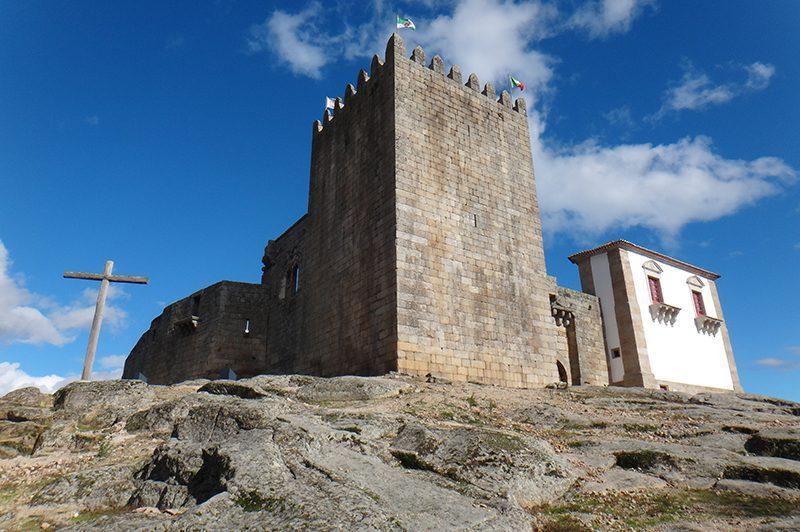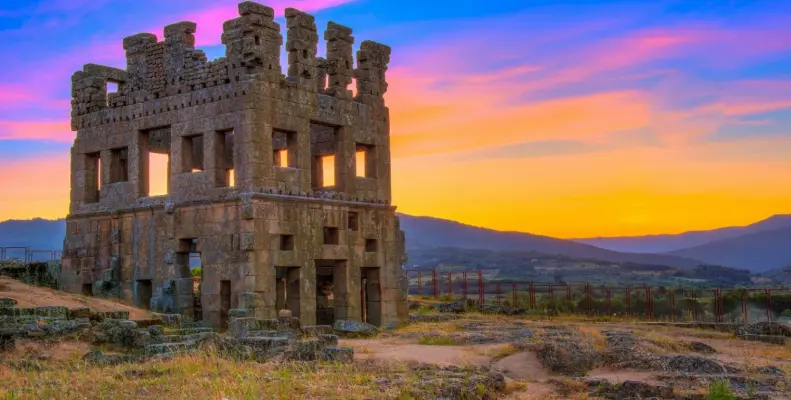Man the lands of Belmonte since prehistory, as attested by the archaeological remains of megalithic character of the parishes of Inguias and Caria. Equally important are the signs of proto-history, which assume new concepts and strategies of occupation of the territory. At this time, the summits of the mountainous reliefs are privileged, as we can witness by the chandeirinha fort, in the Serra da Senhora da Esperança. Attracted by the mining and agricultural wealth of this region, they quickly realized its strategic and economic importance, and built their vas. There are also the villae of Quinta da Fornea in the parish of Belmonte and Centum Cellae, in the parish of Colmeal da Torre. With its imposing tower, this is one of the most monumental sites of roman times in Portugal and has been the subject of several historical and archaeological interpretations.
The village of Belmonte had a charter in 1199 and is situated in the panoramic Monte da Esperança, on whose most rocky hill was built its castle that, together with the castles of Sortelha and Vila de Taurus, formed the defensive line of Alto Côa, supported at the rear by the natural wall of serra da Estrela and the Zêzere Valley.
In the 13th century, it is attest that there is a prosperous Jewish community in the municipality, responsible for the existence of a synagogue that remains an inscription dating from 1296, in the present-day neighborhood of Morocco. In 1527, Belmonte had the second highest population density in the region of Castelo Branco, and was a rural community dependent on livestock and agriculture and with some trade practiced mostly by Jews.

Belmonte presents a set of infrastructures that allow the education of júnores and seniors, but also support for health, well-being and aesthetics, as well as other services necessary for the day-to-day of the populations and visitors of the region.
The municipality has a strong social component, with its citizens, from the youngest to the older, with various support and benefits for use and acquisition of public/private goods and services of the municipality.
It has municipal equipment with excellent conditions for the practice of sports, with two pavilions and a municipal stadium, maintenance circuitos and a mountain bike program, a project that aims to provide mountain bike routes, for all ages and abilities. You can also count on an Association with presence in the national futsal championships, Associations with Training School in futsal and cycling.

In tourism, take advantage of the range of programs that Belmonte has to offer, ranging from theater, music, reading, leisure, among others.
Throughout the year, there are several associations and institutions that present cultural events, appealing to local associativism. the story of the Discoverer of Brazil Pedro Álvares Cabral, son of Belmonte. In archeology, Belmonte has one of the oldest historical structures in the country – the Centum Cellas Tower and a set of Roman ruins dating back to the 2nd century – Villa Fornea.
In gastronomy, you can taste typicalrats of the county such as roast ed goat, kid stew, chanfana, lamb baked in the oven and typical sweets such as cinnamon cake, egg pudding, rice pudding, biscuits and doughs.
Source: Belmonte Town Hall